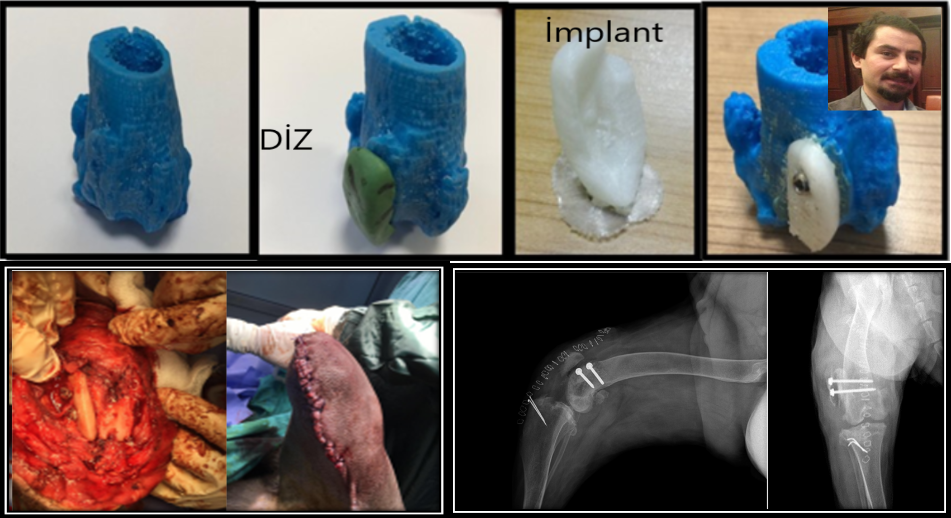A new patient-specific overformed anatomical implant design method to reconstruct dysplastic femur trochlea | Scientific Reports (nature.com)
Dr. Yetkin Öztürk from Molecular Biology and Genetics Department has developed a patient specific overformed anatomical implant design method and prevented 4. degree patellar luxation in a dog. As he is a veterinarian surgeon, the implant designed with surgeon's hand and haptic knowledge. It was printed by 3D printers in Dr. Solak's Lab and Cbilab and applied with a surgical operation with his collegues in İU-Cerrahpasa University. The study was published in ''Nature, Scientific Reports''.
Patellar luxation with condylar defect is a challenging situation for reconstruction in humans. Patella reluxation, cartilage damage and pain are the most common complications. This study aims to present a new patient specific method of overformed implant design and clinical implantation that prevents luxation of patella without damaging the cartilage in a 46 kg dog. Design processes are computer tomography, computer assisted design, rapid prototyping of the bone replica, creation of the implant with surgeon’s haptic knowledge on the bone replica, 3D printing of the implant and clinical application. The implant was fully seated on the bone. Patella reluxation or implant-related bone problem was not observed 80 days after the operation. Three-point bending test and finite element analysis were performed to determine the biomechanical safety of the implant. The stress acting on the implant was below the biomechanical limits of the implant. Compared with trochlear sulcoplasty and total knee replacement, there was no cartilage damage done by surgeons with this method, and the implant keeps the patella functionally in sulcus. In addition, there may be difficulties in implant placement and prosthetic complications in tumor defect surgeries, critical zygomatic bone and vertebral fractures. These complications are caused by the different anatomy on the trauma side and the presence of vital vessels and nerves around it. Overformed implant shapes may be more functional in some circumstances. We believe overformed anatomical implant design is promising in solving some of the challenges in implant surgeries by involving the surgeon's hands in rapid prototyping with surgeon’s haptic experience.
